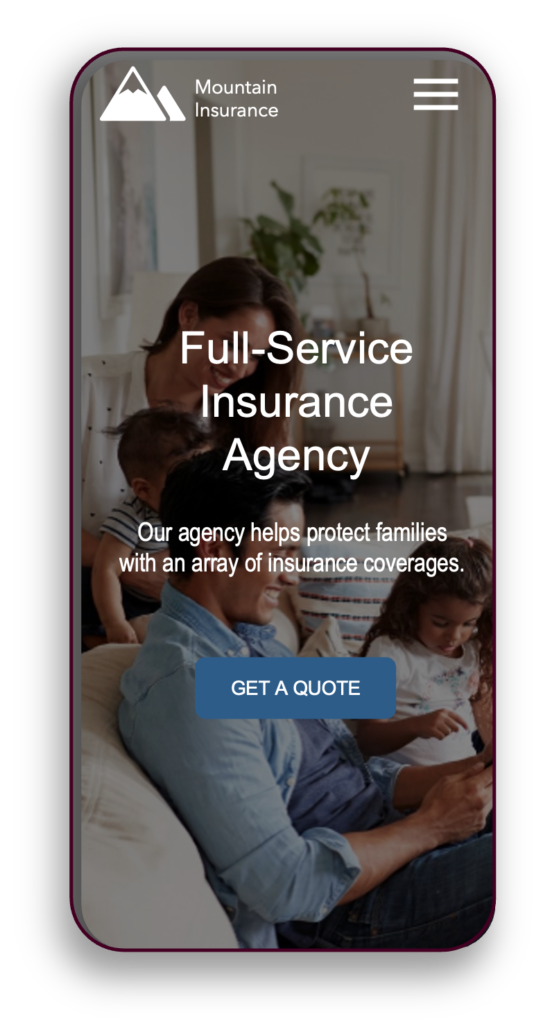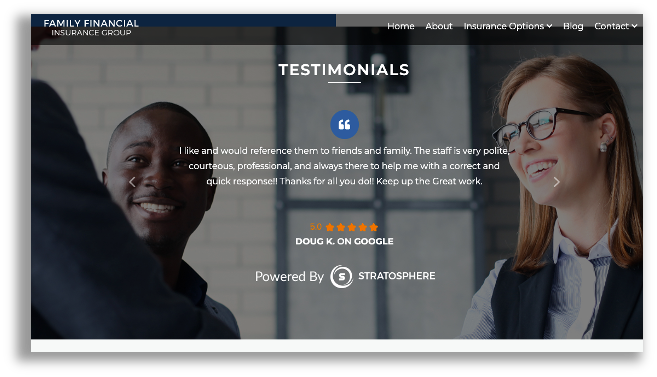What makes a good insurance agency website?

Your website is often the first interaction potential clients have with your insurance agency. A well-designed, functional site can leave a lasting positive impression, while a poorly executed one might drive visitors away.
In this article, we’ll explore the essential elements of a great insurance agency website and highlight the pitfalls of a bad one.

1. Design Elements
Good Website:
- Professional, Clean Layout: A sleek and modern design with intuitive navigation makes it easy for users to find what they’re looking for.
- Consistent Branding: Colors, fonts, and imagery reflect the agency’s brand identity and inspire trust.
- White Space: Strategic use of white space helps avoid clutter and guides the user’s eye to key information.
Bad Website:
- Outdated or Overcrowded Design: Flashy animations, inconsistent fonts, or cluttered layouts make the site look unprofessional.
- Unclear Navigation: A confusing menu or too many links frustrate visitors and increase bounce rates.
- Low-Quality Images: Grainy or irrelevant images diminish credibility.

2. Content
Good Website:
- Informative and Client-Focused: Content addresses common insurance questions, provides value, and highlights the agency’s expertise.
- Clear Service Descriptions: Pages are dedicated to specific products like home, auto, or commercial insurance, with easy-to-understand explanations.
- Educational Blog Posts: Regularly updated blogs build trust and improve SEO by targeting industry-relevant keywords.
Bad Website:
- Generic or Vague Information: Content lacks depth or focuses too much on the agency instead of the client’s needs.
- Outdated Information: Old blog posts or inaccurate service details reduce credibility.
- Keyword Stuffing: Overusing SEO keywords makes content feel unnatural and unhelpful.

3. Calls-to-Action (CTAs)
Good Website:
- Strategic Placement: CTAs like “Get a Quote” or “Contact Us” are prominent, yet non-intrusive, on key pages.
- Action-Oriented Language: Phrases like “Protect Your Home Today” or “Save on Auto Insurance” clearly communicate the benefit.
- Quick Access: Clickable buttons lead directly to simple forms or contact methods.
Bad Website:
- Missing or Weak CTAs: No clear direction for what visitors should do next.
- Too Many CTAs: Overwhelming users with buttons everywhere creates confusion.
- Broken Links or Forms: A malfunctioning CTA button frustrates visitors and loses leads.

4. Mobile Responsiveness
Good Website:
- Fully Responsive Design: The site adapts seamlessly to any screen size, from smartphones to tablets.
- Mobile-Specific Features: Easy-to-tap buttons, thumb-friendly navigation, and quick-loading pages enhance the mobile experience.
- Fast Loading Speed: Optimized images and efficient coding ensure fast performance on all devices.
Bad Website:
- Poor Mobile Experience: Non-responsive designs that require zooming or scrolling horizontally drive users away.
- Broken Layouts: Elements that overlap or fail to display properly on smaller screens damage credibility.
- Slow Load Times: Unoptimized content leads to frustration and higher bounce rates.

5. Trust-Building Features
Good Website:
- Customer Testimonials: Real stories from satisfied clients build credibility.
- Licenses and Certifications: Displaying affiliations with professional organizations reinforces trust.
- Privacy and Security: Clear privacy policies and secure forms assure users their data is safe.
Bad Website:
- No Social Proof: A lack of reviews or testimonials leaves visitors wondering about credibility.
- Unclear Security Measures: No visible privacy policy or security credentials may deter users from sharing personal information.

6. SEO and Performance
Good Website:
- Optimized for Search Engines: Keywords, meta descriptions, and structured data ensure the site is discoverable.
- Analytics Integration: Tools like Google Analytics provide insights into user behavior.
- Regular Updates: Fresh content keeps the site relevant and improves rankings.
Bad Website:
- Poor SEO Practices: No optimization for search engines leads to low visibility.
- Neglected Analytics: Without tracking, it’s hard to identify what’s working or what needs improvement.
- Stale Content: A site that looks abandoned may lead users to question the agency’s operations.
Key Takeaways
A good insurance agency website should reflect professionalism, prioritize user experience, and serve as a tool to educate and convert visitors. Conversely, a poorly designed or outdated website can harm your reputation and drive potential customers away.
Investing in features like responsive design, strategic CTAs, and valuable content is essential for building trust and driving results. If you’re unsure how to start, consult a professional agency to help design a website that not only looks good but also works hard for your business.



